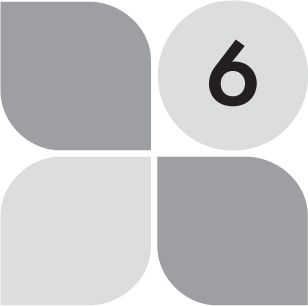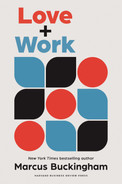
Find Your Red Threads
Before you do something, love feels like instinctively wanting to do it.
While you are doing something, love feels different. It feels like time speeding up.
Have you ever noticed how this feeling called “love” does something strange to this reality called “time”? How, when you are in love with someone, time seems to both speed up and slow down, depending on whether you’re in the presence of the one you love. Before you’re with your lover, time drags and slouches, and each moment stretches out to its very limit. You can’t wait, but time makes you wait, and wait, and wait some more, as it slowly inches its way up the ever-steepening hill.
Then, finally, you and your lover are together. Time meets you on the summit … and immediately throws itself off, dashing, rushing, rolling down the hill, picking up speed, the hours turning into minutes, the minutes into seconds, the seconds vanishing, and you look up at the clock and your time is up. Your whole day together speeds by in what seems like half an hour.
When you’re doing an activity you love, the same thing happens. You get so deeply connected to what you’re doing that the moments flow together, smooth, easy, inevitable. You don’t experience the activity as a sequence of defined steps, separated from you, outside of you, one taken and completed before the next is taken. Instead, the activity seems to meld with you, and you experience it from the inside out. As if it’s a part of you.
It’s hard to describe this feeling, but we’ve all had it. When we are inside an activity we love we are enveloped, so in the moment that we are no longer aware of ourselves. You are not doing the activity. You are the activity. The late, eminent positive psychologist Mihaly Csikszentmihalyi called this feeling flow and said it was the secret to happiness.
Michael Jordan, like most great athletes, used to spend hours watching his game tapes, not to pump himself up—well, not only to pump himself up—but more because when he leaped for that rebound, beat that double-team, sank that three-pointer, he was so deep in the activity itself that he didn’t realize he was doing it. Rewatching his own highlight reel was his way of seeing and absorbing himself while in flow.
None of us has Michael’s talent, but we all do have certain activities that give us this same feeling—of vanishing into the act, of fluidity, of the steps falling away and time speeding up. And we all recognize it. We don’t necessarily need complex positive psychology theories to identify which specific activities we love. We just need to watch out for when our time flies by. When we and the thing we are doing become one.
Bored of the Rings
Every boy has a choice, so my brother, Neil, told me: you’re either a Lord of the Rings boy or a Narnia boy. (I’m not sure what choice girls had. My brother never told me.) And if you’re a Lord of the Rings boy—as he was—then you have to decide if you identify with Aragorn, Boromir, Legolas, or Frodo. Neil was more of an Aragorn. I, apparently, could choose whomever I liked, but probably not Aragorn.
“How will I know?” I asked.
“Oh, you’ll know,” he said. “Everyone does.”
So, I began reading The Fellowship of the Ring and waited for the clues to show me who was my spirit guide through Middle-earth.
My problem, which revealed itself about a quarter of the way into the book, was less that I didn’t know who to root for, and more that I didn’t care for any of them. To be honest, I didn’t care about any of them. I was bored. By the hobbits, by the Nazgûl, by the people they globbed onto along the way, by the entire mission itself. It just didn’t seem terribly interesting. Or important.
“That’s OK,” Neil assured me. “You’re a Narnian.”
So, I tried The Lion, the Witch and the Wardrobe. Which also failed to grab me at all.
“Don’t worry,” said Neil. “Try The Voyage of the Dawn Treader. Even LOTR lovers love that one.”
So I did. And I didn’t. Love it, that is. Not any of it. I found the book so put-downable that I didn’t even get to the “best bit,” where Eustace turns into a dragon.
To Neil, I was a bit of a lost cause. To myself, I was a big disappointment. I was odd: Why didn’t I dive into these books and love them the way other kids did? Maybe I just wasn’t a reader. If reading was supposed to be fun, and these books were the funnest of the fun books, then, well, that left me outside of the circle, a nonreader.
I sort of stayed that way for the next few years. Yes, I would occasionally try my hand at a little science fiction, and yes, of course, I would read what my school assigned me to read, but reading for pleasure? No, sorry, not for me. I’m just not a reader.
And then The Discoverers by Daniel Boorstin landed in my stocking one Christmas morning. I was sixteen at the time and had dispensed with Santa yonks ago, but my young cousins were staying with us, so, with that little thrill of discovery still in me, I got up at 5 a.m. with them and rummaged around in the pillowcase at the end of the bed for my presents. (We were a pillowcase rather than a stocking family. Not sure why. Mom was from North Yorkshire, so maybe people were wearing all the available stockings to keep the cold out.)
In among the oranges, and the Top Trumps playing cards, and the underwear, was a book. A thick book—745 pages thick. I’d never heard of it. Never heard of the author. Not that I thought much about that, as I’d long since resigned myself to the idea that books weren’t my thing.
It was now 5:25 a.m. The cousins had ripped open their presents and were telling each other jokes from their joke books. My parents were still asleep. And so, with breakfast a long way off, I opened my new book and started to read.
I don’t think I stopped reading the entire day. I was late for breakfast. Snuck the book into church. Missed the Queen’s speech, the Morecambe and Wise comedy special, had to be dragged into the living room for the traditional Christmas-night game of charades.
I fully admit that to you—and to many, many other people—Boorstin’s book may read like the phone book. But to me it was riveting. It is the story of us human beings as discoverers. It contains no dragons, no talking lions, no dwarves, and no Gollum. Only real men and women grappling with how our world works and how we came to live within it.
I had never realized that the main project of early philosophers was to find out which parts of things stay the same when they grow and which parts change. Today it’s obvious to us that a foal will grow only into an adult horse, and no matter what you feed the foal it has zero chance of growing into a bull. But why do we know that? Before we had the benefit of understanding genes, what argument could you make as to why a foal doesn’t grow into a bull—other than that no one had seen one do so. After all, a caterpillar encases itself in a very non-caterpillar-like chrysalis, which in turn morphs into an utterly non-chrysalis-shaped butterfly. So why not a foal into a bull?
This sort of stuff may bore you to tears, but me, I was hooked. I had no idea—until I read about it in this book—that Isaac Newton was less interested in gravity than in answering the question “What is white light made of?” I had never even thought about that question, but through this book I could imagine him putting a prism in front of a small crack in the wall of his Cambridge digs, seeing the rainbow fan out on the wall opposite, and suddenly realizing that white light is made up of all the other colors in the spectrum.
I had no idea that while humans had figured out how to measure latitude—how far north or south of the equator you are—two and a half thousand years ago (thank you, Eratosthenes), by 1770 we still hadn’t discovered how to measure longitude—how far east or west you’d traveled. And I had no idea why latitude was such a slam dunk, while longitude was a complete mind bender.
In school I didn’t particularly care for physics or chemistry, and any classes on philosophy were met with one massive yawn, but this book was different. This was a whole book devoted to thousands of people all asking “Why?” Why does the light of a thunderbolt always precede its sound? Why does a heavy boat float, and when and how can you make it sink? Why do all creation myths around the world have such striking similarities? Why does every human society ritualize death? These questions were, for me, as breathtaking as anything that Frodo might be doing with his ring. They drew me in, and encircled me, and then lifted me up and transported me back to ancient Alexandria, to London during the Great Fire of 1666, to Marie Curie and her fatal laboratory.
I was a reader after all. Just not a reader of fiction. What was urgent and intense for me wasn’t whether Lord Sauron could be defeated, but rather whether John Harrison, the self-taught watchmaker, could figure out how to measure longitude before yet another fleet of British ships became shipwrecks. And it wasn’t merely fiction I wasn’t into—I was bored by biographies, and somehow even the most beautifully written historical nonfiction read like a textbook. But any book where the author was trying to peel back the layers of the world, and in particular how we humans move through the world, was almost instantly riveting to me. Just the Way You Are by Winifred Gallagher, The Black Swan by Nassim Taleb, How the Mind Works by Steven Pinker—these (long) books pulled me in, and hours spent reading them whipped by in seconds.
Find Your Red Threads
Did I know that my interest in these sorts of books would guide my career and lead me to leave my home and family for the American Midwest? No, not really. To begin with, my interest was just a sign of something I loved, something not shared by my family or friends, something about me I could hold on to as I tried to figure out how to make myself useful in the world.
You’ll have activities like this. Activities where you disappear within them, and time flies by. Think of these as your “red threads.” Your life—at school, home, work—is composed of many threads, many different activities, situations, people. Some of these threads are black, white, gray, brown, emotionally meager, a little up, a little down, don’t do much to move the needle.
But some of them are red. Red threads are made of a very different material. They appear to be extremely positively charged. You find yourself instinctively wanting to pull on these threads. And when you do, your life feels easier, more natural, time rushes by. These threads are the source of your Wyrd, your uniqueness, felt and then expressed in certain activities.
Not everyone who excels in the same role shares the same red threads. In my interviews with highly successful hotel managers, one front desk supervisor said her reddest thread was solving guest complaints: “It almost sounds strange, I know, but I actually love it when an angry guest marches up to the front desk. I find my brain works faster, my adrenaline pumping, it feels amazing, like I’m on edge, but loving it. Guess I have a superhero complex, right?”
Another person—same role, same company, same level of success—shared this: “My best moments are trying to figure out how to get my team to jell. It’s hard because you’ve got all these different personalities, different schedules, different roles, and somehow I’ve got to arrange it all so that you’ve got the right people doing the right things at the right time. Of course, I never get it quite right, but I’m so into it.”
And this, from another super-successful manager: “People say I’m never satisfied, but I don’t think of it like that. I love taking something that’s working and then figuring out newer and better ways of doing things. I get bored so quickly. So if it’s new, never been done before, first time, I’m right there. I can’t tell you how many times we’ve redone our team awards, or our guest appreciation programs. I’ll never stop.”
So, no, your red threads won’t tell you in which particular job you will be successful.
Instead, they’ll reveal how you—one particular individual—will be most successful in whatever job you happen to choose.
The Red Thread Questionnaire
To help you pick out your own red threads, try asking yourself these “When was the last time … ?” questions.
The conventional wisdom tells you that your past behavior is the best predictor of your future behavior. However, importantly, the data reveals something different: your frequent past behavior is the best predictor of your frequent future behavior.
So, to help you identify your red threads, the trick is to identify your frequent patterns. And the best way to do this is to prompt yourself to think about a time, an instant, when something happened that made you feel a certain way. Because if I prompt you to think of an instant that’s specific by time or by person or by situation, and something immediately pops into your mind, the chances are that this instant is not a one-off, but is instead part of a pattern that happens frequently—if something is happening to you frequently then, no matter when I nudged you, a specific instance would pop into your head because this sort of instant, whatever it may be, is happening all the time.
When was the last time …
… you lost track of time?
… you instinctively volunteered for something?
… someone had to tear you away from what you were doing?
… you felt completely in control of what you were doing?
… you surprised yourself by how well you did?
… you were singled out for praise?
… you were the only person to notice something?
… you found yourself actively looking forward to work?
… you came up with a new way of doing things?
… you wanted the activity to never end?
Try to answer each question instantaneously, off the top of your head, as it were. Don’t overthink it or intellectualize it. Just come up with the last time you felt each of these ten feelings. You might write down the date or the time, but more important, write down what you were doing. Which activities created in you these specific sorts of experiences?
What you are looking for here are the patterns. I doubt you will list ten different activities. Instead, more than likely, you’ll find some overlap between your answers. Perhaps the last time you were singled out for praise was also the last time you lost track of time. Or maybe the last time you came up with a new way of doing things was also the last time you never wanted the activity to end.
Use your emotional reaction to the raw material of your life to pinpoint which activities have these red-thread qualities.
Once you identify these red threads, your challenge will be to weave them into the fabric of your life, both at home and at work. We’ll get into how to do that later in the book, but for now please know that you do not need an entire quilt made up of only red threads. You don’t need to “do only what you love.”
Instead, you need only to find specific loves—red threads—within what you do. Recent research by the Mayo Clinic into the well-being of doctors and nurses reveals that 20 percent is the threshold level: spend at least 20 percent of your time at work doing specific activities you love and you are far less likely to experience burnout. Research by colleagues at the ADP Research Institute reinforces this finding. According to their recent global study of twenty-five thousand workers, if you have a chance to do something you love each and every day (even if you aren’t good at it yet), you are 3.6 times more likely to be highly resilient.
So, yes, love matters, but you don’t need to love all you do. You just need to find the love in what you do. And as the Mayo Clinic research reveals, even a little love goes a long, long way.1

